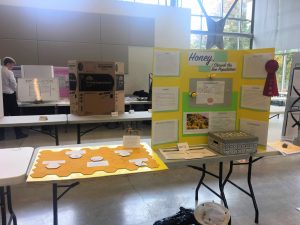2 Presentation

History of Bees
Honey bees have a long history of providing beneficial services to the earth. From the well-known civilizations of Ancient Egypt and Ancient Greece, honey bees have had their share of recognition by partaking in the culture’s mythology. Considered the first beekeepers in history, Ancient Egyptians practiced beekeeping especially in Lower Egypt due to the land’s considerable irrigation and vast fields of flowering plants. The Egyptians utilized the honey bee’s wonderful services for food and medicine. In Egyptian culture, gods were associated with honey bees, and even the sanctuary in which they worshipped the Lord of the Underworld Osiris was known as the Mansion of the Bees. Similarly, in Greek culture, honey bees received their share of recognition. In mythology, honey was the food of the gods and was used to preserve the remains of those who had passed. During 1622, the fruitful and diligent honey bee went global and reached North America. From there, they have continued to spread their services throughout the world. Now, after millions of years in service to the Earth, honey bees are in danger. Humanity have built its culture, lifestyle, and economy upon the existence of honey bees. Now, it may be time for humans to use biotechnology and return the favor by helping honey bees fight to live in this harsh, cold world.
What’s the Buzz – (Background)
In recent years, scientists have witnessed a dramatic decline in the honey bee population and coined the term Colony Collapse Disorder (CCD) to describe the occurrence. According to the United States Environmental Protection Agency (EPA), “Colony Collapse Disorder is the phenomenon that occurs when the majority of worker bees in a colony disappear and leave behind a queen, plenty of food and a few nurse bees to care for the remaining immature bees and the queen.” Without her valuable workers, a queen cannot rule the kingdom efficiently, and so the kingdom must perish. In the winter of 2006-2007, the EPA received reports from some beekeepers about unusually high losses of 30 to 90 percent of their beehives. Nearly 50 percent of the affected colonies expressed symptoms not consistent with any known causes of bee death. The main symptoms of the affected colony included a sudden loss of the worker population with few bees found near the colony, the queen with her young remaining in the colony, and an abundant amount of pollen and honey reserves in the colony. Eventually, a hive cannot sustain itself without worker bees, and the hive would die. The combination of events resulting in the death of a bee colony was known as CCD. Two of the many contributors to CCD are pathogens and parasites.
Biotechnology in Action
Varroa Sensitive Hygiene
Mite-resistant behavior in which honey bees can identify varroa inside brood and uncap sealed brood to remove the mites. Scientists can potentially breed this attribute into bees to promote defense against varroa.

